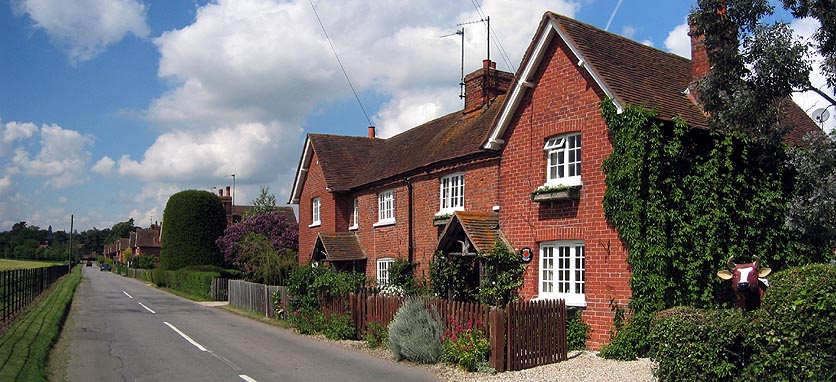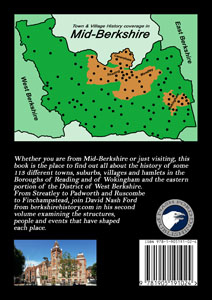 |
 |
||||||||
|
|
Englefield Home of One Family for a Thousand Years
The parish apparently derives its name from the battle fought there between the Anglo-Saxons and Vikings in AD 870. It either means Englishmen's [Battle] Field or Warning Beacon Field. The invading Vikings had set up camp in Reading, from where a raiding party set out to attack Aldermaston. Aethelwulf, the Ealdorman of Berkshire who lived there, engaged them at Englefield and the Vikings were thoroughly defeated. They were, however, not finally expelled from the county until after King Alfred's victory at Edington in Wiltshire, some eight years later. The Englefield family supposedly owned the manor from the time of King Edgar the Peacemaker in the mid-10th century until it was confiscated from Sir Francis Englefield, an infamous 16th century Roman Catholic who worked for 'Bloody' Queen Mary Tudor until forced to flee overseas. The Englefields later bought Whiteknights Park in Earley and continued to be buried in the Englefield Chapel in Englefield Church until the last of them died in 1822. They still have impressive monuments there, although seven fine brasses have disappeared, including one from the elaborate 1514 tomb-chest memorial to Sir Thomas Englefield, Speaker of the House of Commons. Arches under the south wall shelter a stone knight and a wooden lady of the early 14th century. Sir Edward Norreys, Governor of Ostend, also lived in the parish and entertained Queen Elizabeth I at his house on the site of the old rectory. Englefield House is basically an Elizabethan E-plan building, believed to have been built for the Queen's favourite, the 2nd Earl of Essex, after he bought the estate in 1589. After the Civil War, the house became the retreat of the 5th Marquess of Winchester when he returned from exile abroad. He had held his old home, the palace of Basing House (Hampshire), against a three-year siege by parliamentary troops, until Cromwell himself arrived to finish it off. Basing was then raised to the ground. Winchester's third wife was the granddaughter of Sir Francis Walsingham and they may have purchased the Englefield estate because an old family connection with the house. They have a fine monument in the north aisle of the parish church. Although the family have changed their name twice, the Benyons have been in residence at Englefield House since 1802. The artist, John Constable, produced a painting of it for them thirty years later. At the end of the 19th century, Richard Fellowes Benyon restored and embellished Englefield House and he did the same for the village whose community thrived under his influence. He created a model estate village, modernizing cottages and farm buildings and providing a bathing pool for boys and a penny soup kitchen agen slot, not to mention a new school and the modernization of the church, using Gilbert Scott as his architect. Benyon even moved the Bradfield Road from where it ran through the archway at the back of the house to its present route on the other side of the estate wall. Read more history of Englefield and other nearby settlements, like Sulhamstead & Lower Padworth, in David Nash Ford's book, 'Mid-Berkshire Town and Village Histories'. Click to Order direct from the Author.
|
||||||||
| © Nash Ford Publishing 2001; Revised 2020. All Rights Reserved. | |||||||||





